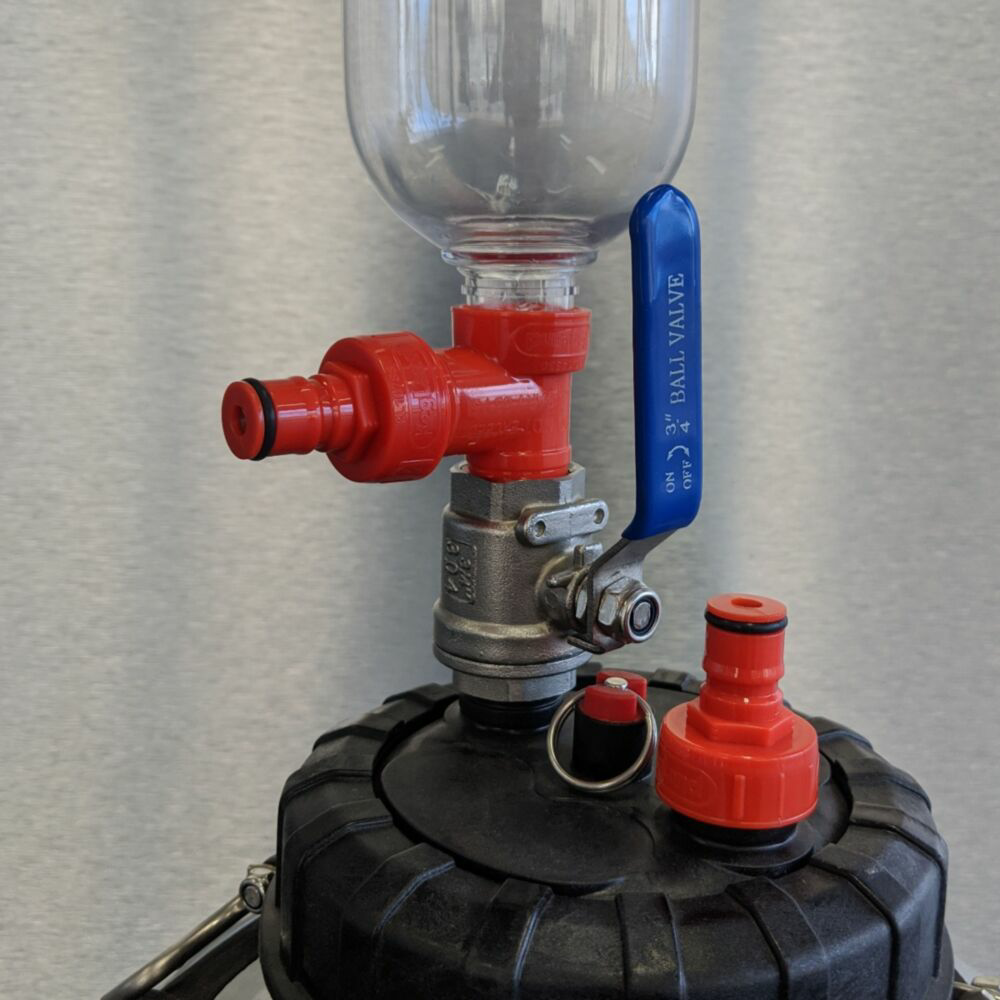I have owned and used a FermZilla since they were first introduced and think it’s a great product. Dry hopping using a CO2 purged collection container works with an ounce or so of hops. The problem is that brews requiring large amounts of dry hopping can’t be done in a FermZilla while relying on the small container.
Many of the solutions discussed in this thread to dry hopping when using the FermZilla are good ones. Unfortunately, they seem to add additional layers to the brew process allowing more steps for errors to happen. This is especially true when brewing a NEIPA that as we all know is fragile and extremely susceptible to oxydation.
Dry hoping a NEIPA involves the introduction of a large amount of hops at the tail end of fermentation. In using a FermZilla this normally involves opening the FermZilla in some way to get these hops into the beer by the methods discussed. Some of these methods create clogging problems when it comes time to keg the beer.
Allow me to share the dry hopping process I use when brewing a NEIPA in the FermZilla while keeping the brew continuously under pressure:
When the wort is first put into the FermZilla, my dry hops go in just before I close the lid. No, it’s not what you think..,.I don’t simply throw them in. I fill 3 or 4 small fine mesh hop bags with the hops needed for dry hopping. Into each bag goes an epoxy coated steel disk. I put the filled bags inside the FermZilla and suspend them in the airspace above the wort using 1” diameter rare earth magnets (a.k.a. neodymium magnets) placed on the outside of the FermZilla. Leave them there while the normal process of fermentation takes place. During this time, any oxygen that is present in the bags will be used by to yeast as they begin their job of fermentation. Don’t worry if the krausen touches the bags. As long as the hops are not in the wort you’re OK.
When it comes time for the hop additions to be put into the brew, slide the magnets down the outside wall and drag the bags into the wort. Doing it this way (rather than pulling the magnets off and letting the bags drop) allows the magnets to keep the bags submerged. When the time comes to remove the hops (usually in 4 or 5 days,) simply slide the magnets and bags back above the fermented beer to drain. At this point because of the added weight of the bags you will be happy that you used rare earth magnets because those suckers are strong.
As you can see, the FermZilla is never opened during this process and using a fine mesh hop bag keeps the hop solids from clogging your transfer lines. But when raising the hops, you will need to position them so that the FermZilla’s dip tube doesn’t get tangled in them allowing the tube to operate as intended.
This method requires nothing special to be assembled or large cash outlays. Neodymium magnets are available on eBay and Amazon and you probably have the bags. I do recommend that you try this with a water filled FermZilla before the first time you use it on a brew day. It will save others from having to listen to your “garage words” when learning the process.
My NEIPAs come out bright, fresh, and without the slightest hint of oxidation. And, because my NEIPAs are brewed and then transferred under pressure to my purged keg, there is no need for forced carbonation. I get a brew that is refreshing and it lasts quite a bit longer than other NEIPAs.






















































![Craft A Brew - Safale S-04 Dry Yeast - Fermentis - English Ale Dry Yeast - For English and American Ales and Hard Apple Ciders - Ingredients for Home Brewing - Beer Making Supplies - [1 Pack]](https://m.media-amazon.com/images/I/41fVGNh6JfL._SL500_.jpg)







